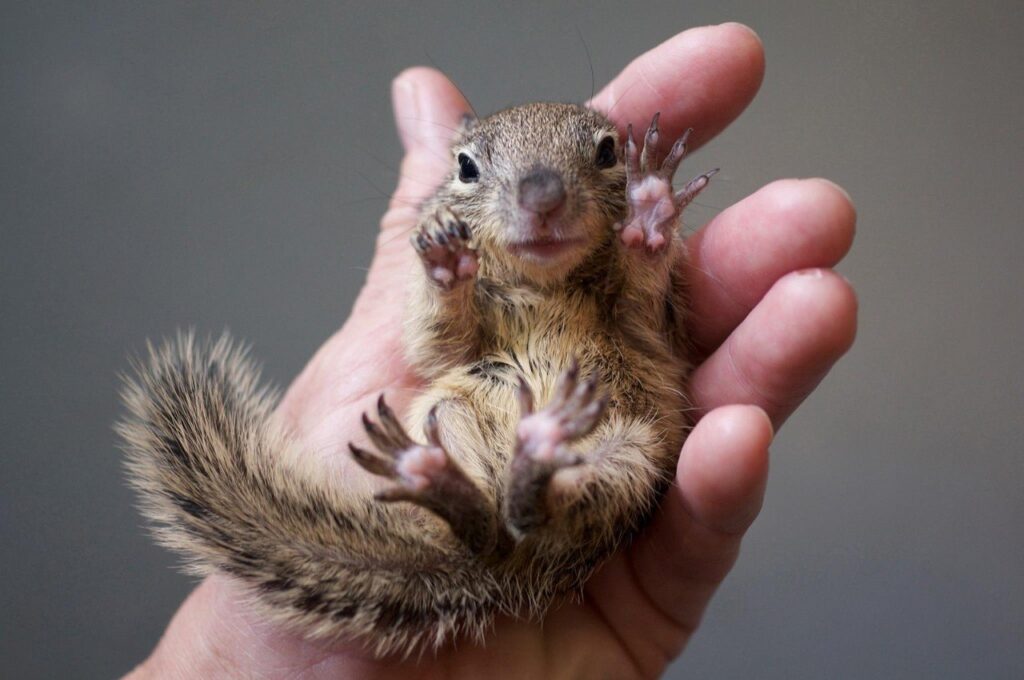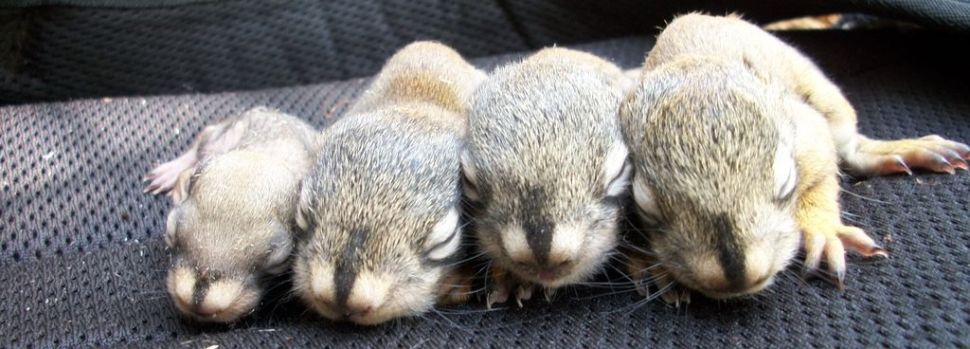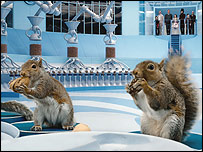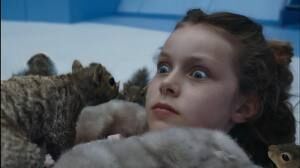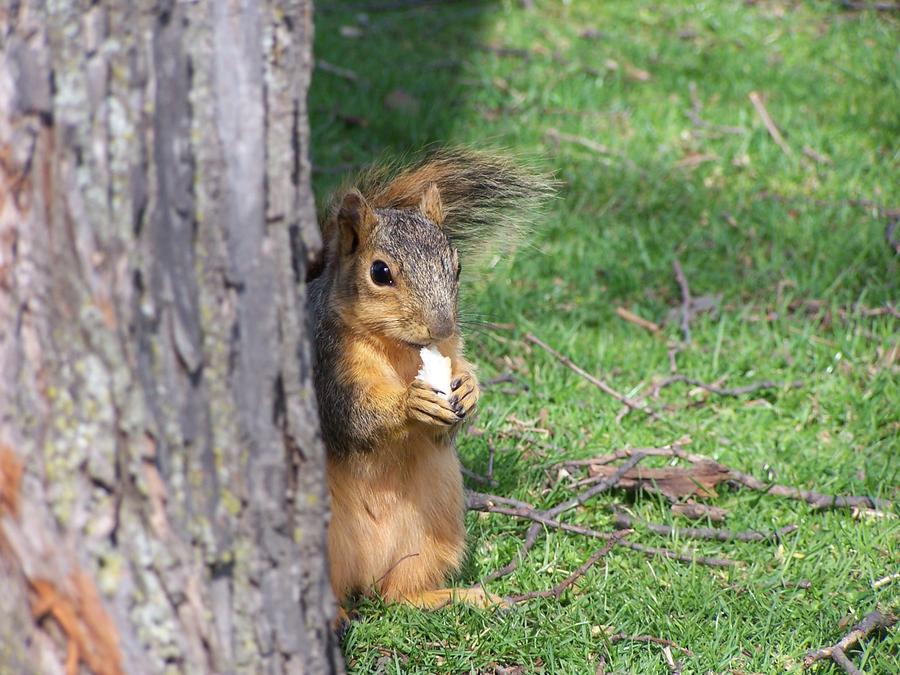On this episode Dean of the Commons Melissa Gresalfi shares her thoughts on the power of “just saying hello”. Anna has details on upcoming events in the Commons Calendar, and she conducts a great interview with Vandy senior and SPEAR President Sydney Juda.
CommonsCast Episode 65-February 10, 2021
On this edition of the CommonsCast Dean Gresalfi discusses events at Vanderbilt celebrating Black History Month, specifically the Murray Lecture featuring LaTosha Brown. Anna delivers the calendar of upcoming events, and she also has a great interview with first-year student Soumya Vytla.
CommonsCast Episode 64-February 3, 2021
Welcome back with a brand new episode of the official podcast of The Commons! On this edition Dean Melissa Gresalfi has some helpful advice for navigating the spring semester, Anna shares some upcoming events in the Commons Calendar, and she has a terrific interview with fellow first year student Khushi Jani
CODE-BUST-ERS
Syllogism – Ciphers are fun; ciphers are fun. Therefore, ciphers are fun.
If some of you nerds did Science Olympiad, you likely know of the event Codebusters. However, some of you non-Science Olympians may not be familiar it. Here’s the likely unexpected overview of the event: you bust codes*. Yes yes, stay in your seats, ladies and gentlemen.
*Technically a code is an encryption where a word is given a new meaning, while a cipher is an encryption where a letter is given a new meaning. For this article we’re going to use code as an all-encompassing term.
The event involves cracking various types of codes, but the most prevalent is the mono-alphabetic simple substitution cipher. As the name suggests, each letter in the alphabet is substituted with another letter. Very straightforward. Example code is shown below.

If you happen to find yourself lacking something to do and aren’t in the mood to watch Netflix, try breaking some codes! They have a wide range in difficulty, so do not worry if you’re not considered pro status.
How does one go about solving these jumbles of letters???
Well, the primary thing to look for is word patterns. The first four words I look for are the, that, a, and I. A and I are typically the only letters that can be by themselves, so they easy to spot. Plus, they’re common vowels, so once you can fill them in, you are much on your way to breaking the rest of the code. The is a great word to look for because it’s so common. Repetition of a three letter word throughout a code should make your mind immediately consider substituting the. That is a great one because it starts and ends with the same letter. Plus, take b as t, if you’re looking over a code and see b frequently, including at the start and end of a four letter word, you can make a solid guess the word is that. (T is the second most common letter, so when you see b frequently here, you figure hmm t is likely quite frequent here.)
It’s also a good idea to look for apostrophes. The vast majority of the time, the letter after the apostrophe is s or t. And, another point of note is the importance of making guesses. Guard against staring and staring at a code, unwilling to make a reasonable guess for fear of having to use your eraser.
I encourage you to go find yourself some codes. Try searching the web for some practice mono-alphabetic substitution ciphers. Also check out the site cryptograms.org. Note: I think breaking codes is much more satisfying when solving them physically on paper, but it’s still fun to solve them on a screen.
If you read this article and think ha!, this writer is a fool, she is failing to properly educate aspiring codebusters, please tone down your judgement a little. I am most likely a fool, but in this instance it’s possible I would be awarded more of a fool characterization than is deserved. I am aware that some exceptions in term of cipher form exist. This article is merely meant to provide a basic overview.
Those with questions or statements of some kind on all things code, feel free to leave a comment.
Appendix-ish Here are a couple codes to try cracking. As labeled, the tables simply show letter frequency within the cipher text (!), not within the cracked code. Letters e t a o i n are the most commonly used in English. When you see, in the code below, that D is the most frequent letter, it’s reasonable to think hmm, this is quite possibly e, t, a, o, i, or n.
I don’t know if I’m able to post a whole document to this post, so I just attached pictures of the codes. If your heart desires, just save them as pictures, then print them. #IThinkItIsFunToUseThePrintersHere.
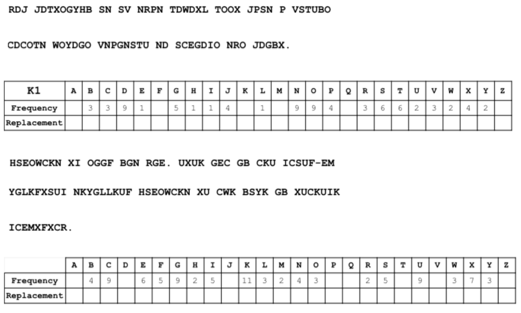
NOTE THE ANSWERS TO THE TWO ABOVE CODES ARE LISTED BELOW.
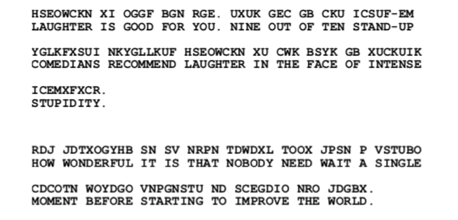
Easy ways to reduce your carbon footprint while on campus
People who don’t care about trying to preserve a healthy environment are idiots. I hope that by now everyone is aware of the planet’s climate crisis and have some desire to create positive change. Serious effects of climate change are very much present today and are extremely difficult to face, especially as humans’ selfish natures and private interests catalyze the environmental devastation.
Even if us privileged and capable Vanderbilt attendees are not the ones finding solutions, the least we can do is try to reduce the problems. Listed below are some very easy actions you can take to reduce your negative impact on the climate.
- Turn off lights. This is not difficult, guys. When you leave a room for more than five minutes turn off the lights. Most often this pertains to your dorm room, but it also pertains to bathrooms. Whenever you finish a shower go ahead and turn off the lights. Especially with covid shrinking the person to bathroom ratios, it might be a while before the next person comes in and needs to shower.

- Stop getting a plastic bag with every meal at the dining hall! Ok yeah, the bags* say compostable but a) Just because they say they’re compostable doesn’t mean they actually get composted. I’m pretty sure most people just throw the bags in the trash. b) Even if something is composted, its lifespan still requires energy. Energy in manufacturing and energy in transportation and energy in transporting it to composting/other site. Here are some things to do instead:
- 1) get one of the free reusable bags Vanderbilt munchies offer.
- 2) reuse one of the large paper bags some dining halls offer.
- 3) just don’t use a bag. A lot of the time, you’re not walking a great distance to where you’re going to sit down and eat. If you’re walking straight out of Rand to the dining tent, I have a sneaking suspicion you very likely don’t need the bag.
- *note, specifically referencing the “compostable” plastic bags in Commons dining. The idea of reduced bags applies to all bags, though.
The phrase Reduce, Reuse, Recycle lists the steps in a specific order. Guard against the false comfort of the thought that oh, this can be recycled, so it’s fine. Your first thought should be to Reduce your use.
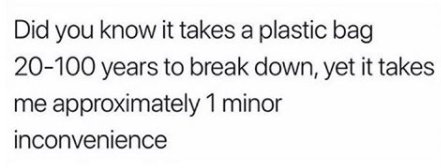
- Reuse utensils. The plastic of new utensils at every meal adds up fast. Try reusing the plastic utensils you’re given. It’s not a bad idea to wash them consistently and keep reusing them. When the kind dining staff hands you your food and starts to hand you utensils it’s easy to just say thank you, I don’t actually need the utensils.
- Bring a reusable water bottle. Yes, plastic is definitely worse than aluminum in terms of environmental damage, but the manufacturing of aluminum still has some impact. It’s totally understandable that you won’t always have a water bottle with you, but make an effort to bring a reusable water bottle with you. A can for just one drink of water is kind of silly.

- A few other points include:
- use the munchie mart paper bags as trash bags #AvoidThePlastic
- take shorter showers
- hang dry small loads of clothes in your room (hang things to dry on spare hangers)
- eat less meat (meat, especially beef, production has a HUGE carbon footprint)
Readers please note that even if you are not immediately threatened by climate change others are experiencing its devastation first hand. There are fires burning homes, rain forests, and animals. There are hurricanes destroying towns. There are extreme droughts that lead to famine in areas already ridden with poverty. Get out of your bubble and try to be part of the solution.
Squirrel Series pt 5: Gone but Never Forgotten
Dear readers, as October, squirrel awareness month, comes to a close, so does the Squirrel Series. This week’s article has no particular theme. It is simply aims to provide some last minute points of (hopefully) interest. All good things must come to an end. Do not cry, my friends.
They’re just kits, man
Baby squirrels are called kits or kittens. They are born blind and stay with mom for about two-three months.
Basic Vegetarians?
Squirrels eat about a pound of food a week. (Most squirrels weigh about one pound, with the exception of the alpine marmot, which is shown below.) They typically eat fungi, seeds, nuts and fruits, but they will also munch on eggs, small insects, caterpillars, baby birds, and even young snakes.
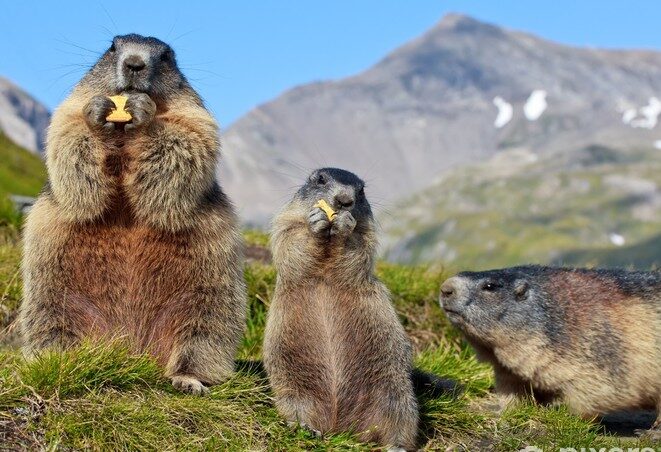
In 2005, squirrels attacked, killed, and ate a dog in Russia. Witnesses reported seeing the squirrels running off with pieces of the dog’s flesh. Yikes. Note that there were apparently very limited protein sources. No similar instances have been reported since.
Stars of the Show
In the movie Charlie and the Chocolate Factory, the squirrels used in the Veruca Salt squirrel scene were trained for eight weeks by animal trainer Steve Vedmore.

Hot Wheels
Though they don’t flex often, squirrels are capable of running 20 mph. Some quick math, that’s a 3 min mile. Pretty impressive, especially considering they’re about 5-6 times smaller than the average human.
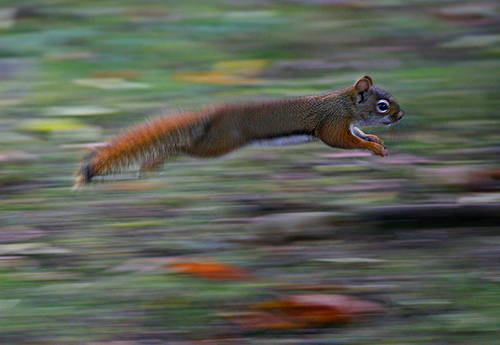
Just like that, folks, the squirrel series is over. Though the squirrels may leave the press, they won’t leave our hearts. Readers are strongly encouraged to heighten their appreciation for the campus squirrels. They’re pretty cool guys.
Thanks for reading. peace out.
Squirrel Series part 4, Where did I put that?
The second and third installments of this Squirrel Series told us that squirrels are methodical in nut caching. The selection of which nuts to eat in the present and which to cache for the future is not random. They put thought into caching the nuts, considering factors like competition and the resource magnitude. Impressive work, squirrels.
Now, not to rain on the squirrels’ parade or anything, we ask are these skills actually useful? What good are these selection and cache processes if the caches go forgotten? This bring us to the question of the week:
To what degree do squirrels remember the location of their caches?
Well, talk about an age-old question. This definitely makes the list. For centuries people have sought an answer to such a burning question. For those of you in a rush, here’s the abstract: a squirrel’s memory depends on its surroundings.
A 1990 study by Lucia Jacobs and Emily Liman of Princeton University examined the accuracy of a squirrel’s memory in locating its cache of 10 hazelnuts within an area that held fellow squirrels’ caches, too. After delays of 2, 4 or l2 days, each squirrel was returned to the area and tested for its ability to retrieve nuts from its own cache site, which was amongst l0 cache sites used by other squirrels. Despite the caches being close, squirrels primarily retrieved nuts from their own caches. The study concludes that squirrels have a notable ability to remember their own caches, though they may also use their sense of smell to find nuts not from a specific cache.
A 2017 study by Mikel Delgado of UC Berkeley identifies a link between a squirrel’s cache memory and its competition. As competition increases, a squirrel’s ability to remember the location of its caches decreases. This makes sense. A squirrel will put less thought into (lol) remembering its caches if they are constantly pilfered. Alternately, less neighbors makes for a better memory for squirrels. These results are interesting in how they show that competition actually inhibits cognitive evolution rather than the perhaps expected opposite.
That’s some of the basic literature. I’m simply trying to convey that squirrels are not stupid. They are smart. Even when they forget their caches, they are doing it because they are smart.
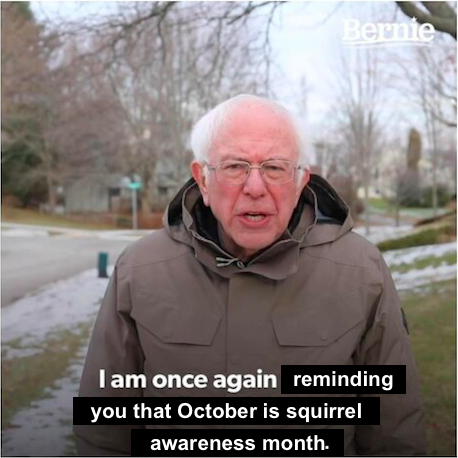
Squirrel Series part 3: Sneakster Status
Welcome back to the Squirrel Series. I remind you this series is written in observation of squirrel awareness month, which is October. If you recall, the first article of the series described the basic mechanics of the squirrel, explaining how they are capable are scurrying in the way they do. The second installment provided information on how a squirrel chooses which nut to eat and which nut to cache. This week’s installment covers where to cache. Keep reading for more intel.
In the last article we asked, “Does the squirrel deserve to be the subject of an idiom such as, “He ain’t got the brains God gave a squirrel,” or does it actually deserve an apology?” As it stands, the answer is leaning toward apology.
Through past research, we recognize the squirrel has reason to cache one nut over another. We wonder, though, once a squirrel decides to cache a nut, how does it proceed?
Sneakily.
In the wee hours of the night, when a squirrel has just gone to sleep after a long day’s work of caching…The Pilferer strikes! With cunning schemes and greedy desires the pilferer steals snicky-snacks from various caches, leaving the robbed hungry and sad. Does the robbed squirrel curl up and cry, refusing to return to its nut caching ever again? NO. It rises to the occasion, adding finesse to its caching techniques and working harder than ever to protect against The Pilferer.
Research consistently shows that increase in competitors, would-be pilferers, and/or general audience makes a squirrel up its stealth game; this makes sense.
- The greater the increase in surrounding competitors, the farther away a squirrel caches its nuts (Tamura, 1999).
- Squirrels are particularly sneaky in the presence of other squirrels (in comparison to audiences such as crows or magpies). Lucy Hopewell of University of Exeter found squirrels refrain from caching when other squirrels are present. When the squirrels did cache, they spent more time disguising the cache (Hopewell and Leaver, 2008).
- Squirrels go as far as to make fake caches. They turn their backs to the audience, furiously pretending to bury a nut. They then scamper to a more discreet location where they bury the nut.
- Squirrels change perception based on the quantity of a resource. When a resource is plentiful, the squirrel makes frequent trips to the source, gathering nuts and caching them at relatively close locations. In this instance the squirrel is on offense, racing against the resource to get as much as possible. As the source’s quantity begins to dwindle, the squirrel turns to defense, now viewing its fellow squirrels as the competition. The squirrel begins to cache its nuts farther from the source (Hopewell and Leaver, 2008).
Indeed, the squirrel has some finesse and method to its caching. It’s first seen in the thoughtful selection of a nut and then the stealthy caching of the nut. Same as it was prior to this article, we find ourselves leaning toward an apology to the squirrel brained squirrels.
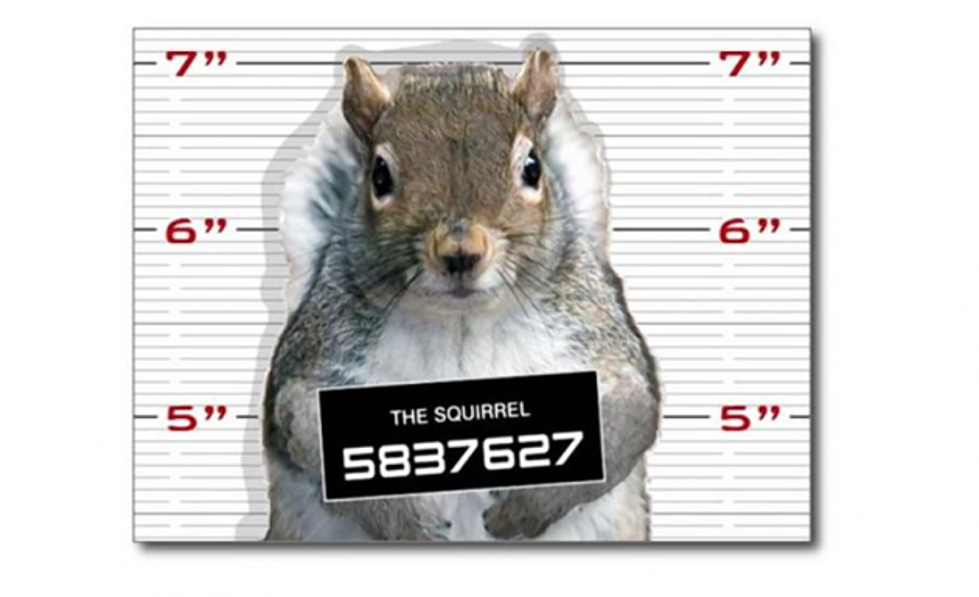
It should probably be noted that these observations might not apply to the campus squirrels, as one could argue they do not live in as wild or competitive environment as their more rural cousins.
Squirrel Series part 2: To Cache or Not to Cache
Between phrases such as “squirrel brained” and “he ain’t got the brains God gave a squirrel!” people throw a lot of shade on a squirrel’s intellect. Does the squirrel deserve this reputation, or does it actually deserve an apology??? This week’s installment in the squirrel series looks at how squirrels pick what nuts to cache. Future installments will further examine aspects of a squirrel and its caches.

TO CACHE OR NOT TO CACHE Multiple studies have found that squirrels more often finish eating white oak acorns than red oak acorns. Squirrels typically eat the entirety of the former, while eating closer to half of the latter; they bury the remaining red oak* half.
Many researchers attribute the difference in treatment of white versus red to the concentration of the acorns’ tannin. Tannins are sour proteins that are found in dry wines and in tanning leather. For several reasons, the squirrels prefer white oak acorns, which have lower tannin content. Over time, much of the tannin will have leached out of the red acorns, making for more desirable meals. Once some time has passed, the squirrels will return to their red acorns.

Other research suggests perishability plays a large role in caching, too. A 1996 paper featuring the Perishability Hypothesis attributes the difference in acorn treatment primarily to perishability instead of taste. White acorns are known to germinate soon after their autumn maturations, thus qualifying for a high perishability rating. Red acorns, on the other hand, remain dormant throughout the winter, waiting until spring to germinate. Therefore, they have low perishability. Researchers consistently found that squirrels cached more red than white. When the squirrels did cache white ones, they first chomped away the embryo of the acorn, keeping it from germinating in its time in the ground.
*Identifiers white oak acorn and red oak acorn here are sometimes abbreviated to white acorn or even white. It should be understood that when white acorn is said that does not mean the acorn is actually white.
So that’s that. It goes without saying that no one can be absolutely sure what goes through a squirrel’s mind. However, research so far described is leaning toward the side that the squirrel deserves an apology. Future investigation will provide further insight.
BE SURE TO READ NEXT WEEK’S INSTALLMENT IF YOU WANT TO BETTER UNDERSTAND A SQUIRREL’S CACHING PROCESS.
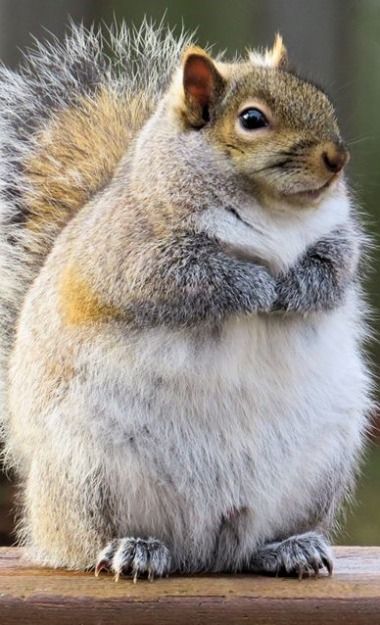
Squirrel Series part 1: Dissecting Our Neighbors
For those of you who don’t know, October is squirrel awareness month. Now, I imagine you’re thinking, “Hmm, what is the best way to celebrate such a momentous occasion?” Well, never fear, my friends. Word on the street tells me that a published mini-series on the squirrel is an acceptable form of celebration. Prepare yourself for the first installment of such a series.
This week’s article covers basic anatomy of the squirrel, describing how it scurries the way it does.
A squirrel is able to perform its acrobatics through three primary features: feet, claws, tail.
A squirrel’s back feet (also called paws) are double jointed. This trait allows them to easily and quickly spin to a different direction while in motion. A squirrel’s sharp sharp claws enable purchase on practically any surface. Working in conjunction with the spinning back feet, a squirrel can hang dangle itself down a tree trunk; the double jointed feet allow the animal to maintain an upward facing stance while dangling, and the sharp claws ensure that the animal can remain dangling (White, 2016).
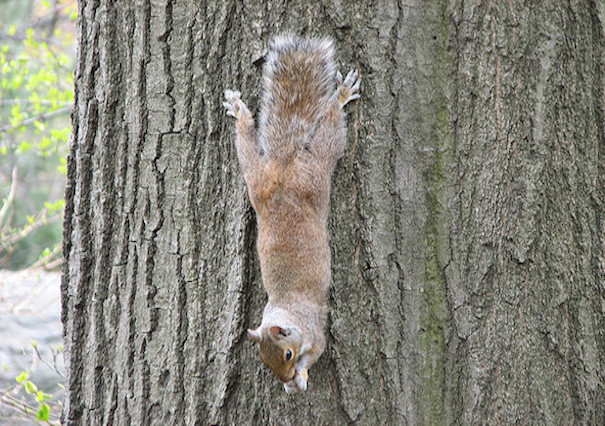
Picture 1 (AC Shadowfall) 
Picture 2 (Alan and Elaine Wilson)
As is the case for most tails, a squirrel’s tail helps maintain balance. Seeing as squirrels spend lots of their time scampering about on tree branches that have diameters smaller than those of pill bottles, it is understandable that a squirrel’s evolution has decided to keep the tail.
When the squirrel becomes too off balance for the tail to manage, the tail can work to compensate for its failure. As a squirrel falls, its tail acts like a parachute. The hairs separate, catching as much air as possible and slowing the animal’s fall (Wall, 2018).
A couple other notable facts about a squirrel’s anatomy include:
A squirrel’s teeth never stop growing, which means they can continue eating nuts without worrying about their teeth dulling into nothingness.
The world’s largest squirrel is considered to be the Indian Giant Squirrel, which weighs about 4 pounds and can reach a length of 18 inches (Bittel, 2019). For more information check out Bittel’s link pasted below.
Return next week to read more about campus’ most prevalent non-human resident.
(Bittel, 2019): https://www.nationalgeographic.com/animals/2019/04/indian-giant-squirrels-colors-camouflage/
(Wall, 2018): https://nuscimag.com/simple-squirrels-or-physics-prodigies-69e6b2ebd70c
(White, 2016): https://asknature.org/strategy/sharp-claws-increase-vertical-agility/#.Wqv3bFnwYsl




